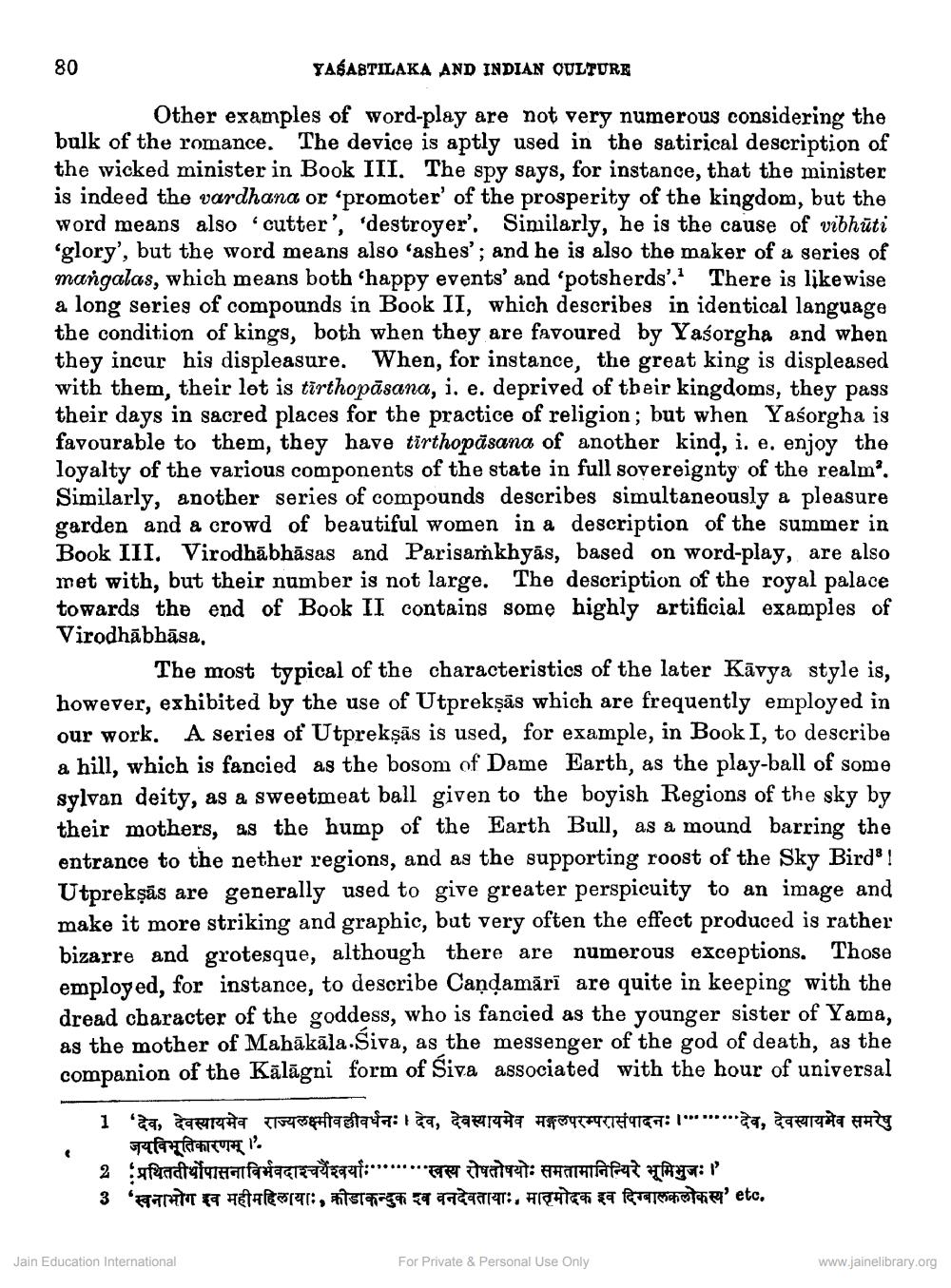________________
80
YASASTILAKA AND INDIAN OULTURE
Other examples of word-play are not very numerous considering the bulk of the romance. The device is aptly used in the satirical description of the wicked minister in Book III. The spy says, for instance, that the minister is indeed the vardhana or 'promoter' of the prosperity of the kingdom, but the word means also cutter', 'destroyer'. Similarly, he is the cause of vibhūti glory', but the word means also 'ashes'; and he is also the maker of a series of mangalas, which means both 'happy events' and 'potsherds'. There is likewise a long series of compounds in Book II, which describes in identical language the condition of kings, both when they are favoured by Yaśorgha and when they incur his displeasure. When, for instance, the great king is displeased with them, their lot is tīrthopāsana, i. e. deprived of tbeir kingdoms, they pass their days in sacred places for the practice of religion; but when Yaśorgha is favourable to them, they have tirthopäsana of another kind, i. e, enjoy the loyalty of the various components of the state in full sovereignty of the realm”. Similarly, another series of compounds describes simultaneously a pleasure garden and a crowd of beautiful women in a description of the summer in Book III. Virodhābhāsas and Parisamkhyās, based on word-play, are also met with, but their number is not large. The description of the royal palace towards the end of Book II contains some highly artificial examples of Virodhābhāsa,
The most typical of the characteristics of the later Kāvya style is, however, exhibited by the use of Utprekşās which are frequently employed in our work. A series of Utprekşās is used, for example, in Book I, to describe a hill, which is fancied as the bosom of Dame Earth, as the play-ball of some sylvan deity, as a sweetmeat ball given to the boyish Regions of the sky by their mothers, as the hump of the Earth Bull, as a mound barring the entrance to the nether regions, and as the supporting roost of the Sky Bird! Utprekşās are generally used to give greater perspicuity to an image and make it more striking and graphic, but very often the effect produced is rather bizarre and grotesque, although there are numerous exceptions. Those employed, for instance, to describe Caņdamārī are quite in keeping with the dread character of the goddess, who is fancied as the younger sister of Yama, as the mother of Mahākāla.Siva, as the messenger of the god of death, as the companion of the Kālāgni form of Siva associated with the hour of universal
i a, aer 14 tastata: 129, dari TTT TETTCH: "...aq, daerah
Talerfahru 1. 2 Isfundaturaafiagif:.... Bertart: HATHATAT: 3 'खनाभोग इव महीमहिलायाः, क्रीडाकन्दुक व वनदेवतायाः, मातृमोदक इव दिग्बालकलोकस्य' etc.
Jain Education International
For Private & Personal Use Only
www.jainelibrary.org




